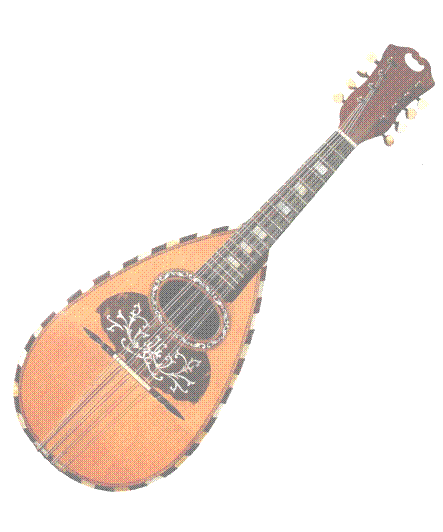|
SHORT HISTORY OF THE MANDOLIN |
|
Circolo Madolinistico |

|
In order to know the origin of mandolin we have to go back to Greeks ones and the lira. This instrument was made of a tortoise shell upon which was tight a membrane of skin, which worked as a resonator. Between the two extremities of the shell were tight several strings, which had to be pinched by the player. From the lira derived the cithara, which was made of wood. In this case the player pinched the strings with his left hand to accompany the song, whereas it made them vibrate by a plectrum (those days a bone splinter) if, during the singing pauses, he wanted the sound to be dominant, i.e. in the interludes. The continuous evolution that occurred along with the centuries led to the lute (more alike to the actual mandolin). This instrument is already provided with a convex resonator, built with many wood strips. The lute, as well as the mandola, were the very instruments used by the so called "cantastorie", the heirs of the ancient "troubadours", to cheer up festivals and feasts. The major diffusion of mandolin took place in 1700, period in which it was utilized by the well known Vivaldi, who composed a great amount of music for it. |